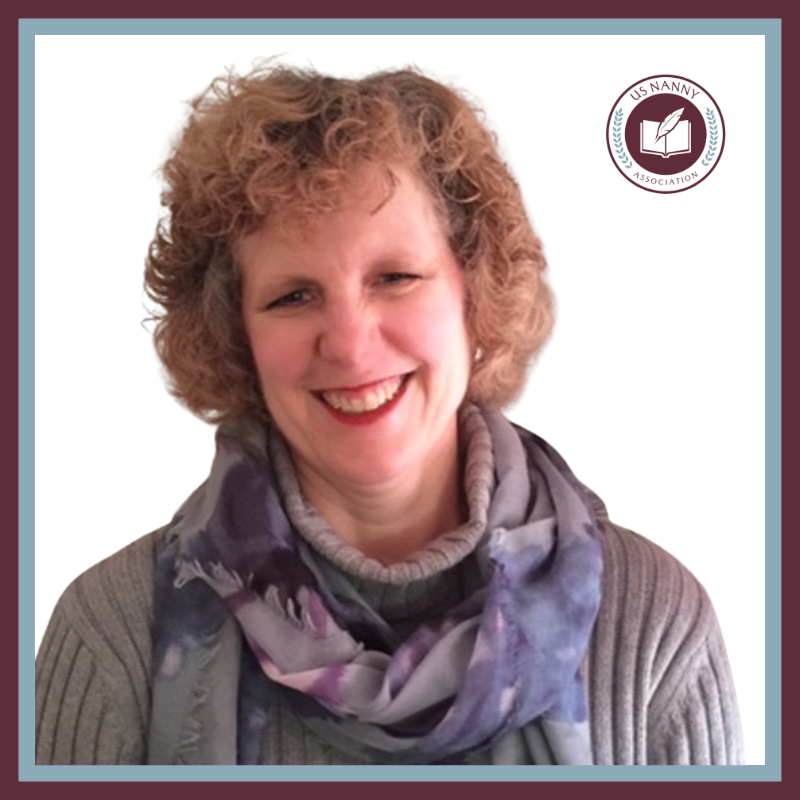Newborns and infants develop quickly in one year. Progress is remarkable and there are things that parents and nannies can do to enhance the child’s development. The child’s pediatrician will track specific milestones, sharing how to assist the child in their development. It’s important to remember that development is on a continuum and each child develops at a different rate. Some children may say their first word at eight months while others may not speak until after 12 months. The stages are fluid and have a range for healthy and typical development. If you are concerned about how your child is progressing through the milestones, talk to your pediatrician.
One to Three Months
The first three months in a baby’s life is life-changing for both the baby and parents. It is important to support the development of the baby and help parents adjust. Research shows that when a baby cries at any time, the baby should be picked up. You need to remember that you can not spoil a baby if you pick them up every time they cry. Picking up or touching the crying child builds security within the child. The child will cry if his/her needs are not being met and when he/she cries, he/she is asking for help from the parents or nannies.
In the first three months, the baby starts to make coos and babbles and tries to copy the sounds the baby hears (CDC, 2019). Adults can assist in language development by talking to the child using proper English instead of baby talk. Adults should have conversations with the baby and sing to the child. It is so important to talk to the baby so he/she will hear the words needed for language development. It’s also important to read to the baby so they can hear the tone and cadence of their native language.
Four to Six Months
At four to six months old, the baby starts to be aware of his/her environment and begins to interact with toys and objects. Continue to talk, read and sing to the baby as the baby will start to identify and respond to different words. Also, begin to play games such as peek-a-boo to encourage laugher and have the baby explore his/her environment. Surround the baby with toys that are bright and make noise so the child can investigate his/her environment. As the baby starts to begin to be aware of his/her environment, encourage them to safely investigate new toys and picture books.
Seven to Nine Months
As the baby becomes closer to a year old, he/she will most likely start recognizing his/her environment and the people in his/her life. The child is beginning to hear and understand the differences between close people in their lives. Observe the baby and his/her reactions to new things and people and understand what makes the baby happy and try to recreate that situation for him/her (CDC, 2019). Continue to talk to the baby and emphasize the baby’s name and when the baby starts to identify things such as milk, mama, and apple.
Remember to say the word, then give the item to the baby. Have the baby say the word and then repeat the word. You hear the baby say, “baba”. You say, “oh, you want the bottle?” Encourage the baby to speak and to say what he/she wants.
At this age, the baby may start to crawl and pull themselves up. Stay close to the child so they feel safe and secure (CDC, 2019). You should also create a safe and protected environment so the baby can feel secure while trying new things.
Ten to Twelve Months
The baby progresses to a toddler at the end of the first year and it been quite a transition. The baby is beginning to feed on his/her own and the child should be able to hold a pencil and crayons. Allowing children to self-feed and have opportunities to draw and color will develop confidence and non-verbal skills. This age is a cross over from being a baby to a toddler and as the adult, you want to show much affection and love to the baby so they will feel loved, safe and secure (CDC, 2019). Providing a safe and secure environment, hep the baby securely transition into a toddler.
References
Centers for Disease Control and Prevention, National Center on Birth Defects and Development Disabilities. (2019). CDC’s developmental milestones. Retrieved from https://www.cdc.gov/ncbddd/actearly/milestones/index.html
New research says babies should be picked up every time they cry. (2017, February). News. com.au. Retrieved from https://www.news.com.au/lifestyle/parenting/babies/new-research-says-babies-should-be-picked-up-every-time-they-cry/news-story/ddd6ce7bdd91d671f9d5782dd88aff7a
Shaw, G. (2009). Baby’s first year: How infants develop. WebMD. Retrieved from https://www.webmd.com/parenting/baby/features/stages-of-development#1
The US Nanny Association thanks all the nannies, advocates and business leaders who provide practical tips and insight to elevate our industry. Thank you for sharing your expertise.

Dr. Lynn Hartman has been an educator for over 25 years. She has a doctorate in Educational Leadership from Kean University, a Master’s Degree in Special Education from Slippery Rock University and a Bachelor’s Degree in Elementary Education from Edinboro University of Pennsylvania. She has been a teacher of both regular and special education from PreK – 8th grade, principal, director, vice president and president of for-profit and non-profit educational institutions and organizations with local and national reach. She has built and managed elementary, middle and high schools.
